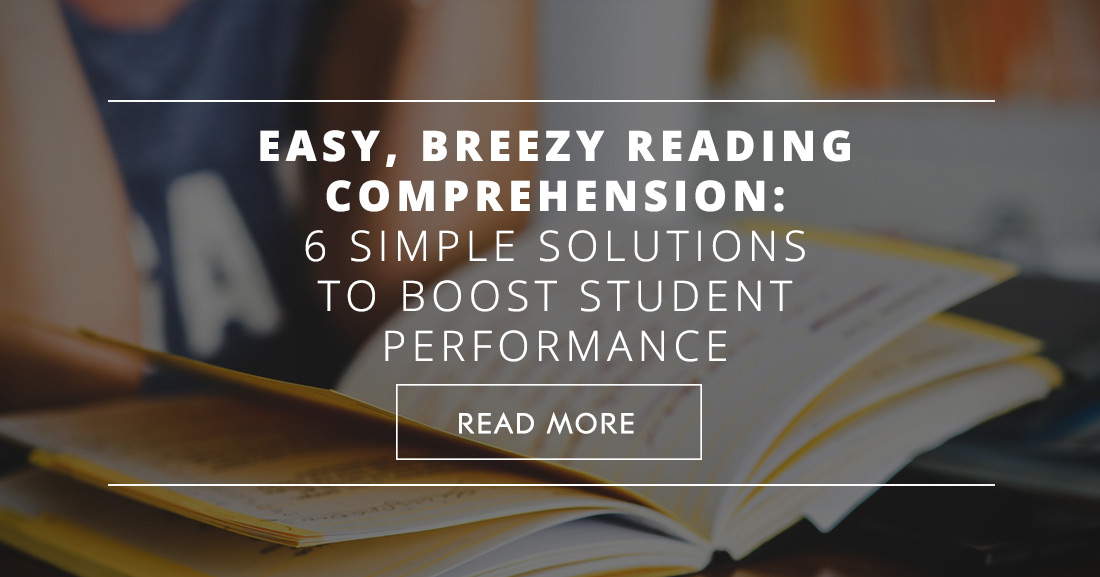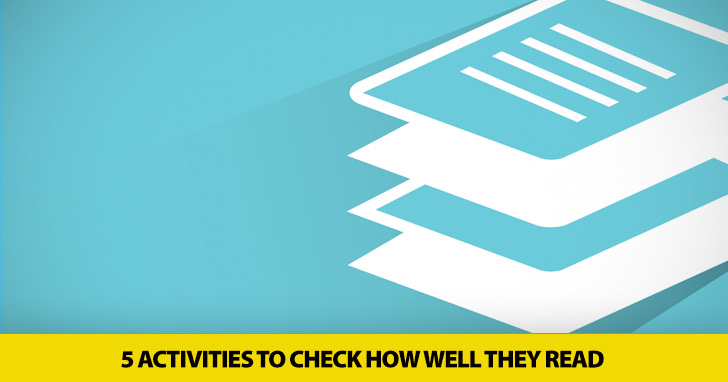Easy, Breezy Reading Comprehension: 6 Simple Solutions to Boost Student Performance


It fills our text books, our lesson plans, and even our trash cans. So many activities we do are dependent on paper. It’s true in all classes, but perhaps even more so in reading class where words on the page are the key to what we teach. But just because your students are reading the words on the page doesn’t mean that assessing their comprehension has to be limited to a lined rectangular sheet. Reading comprehension assessment can be so much more. Here are some ways you can measure your students’ reading comprehension without being dependent on the book and what is inside it.

If you teach younger students or just students who like to get their hands involved as they learn, try this fun out of the box comprehension activity. We often have students reenact what they read in a skit or recreate it in a picture, and both are perfectly legitimate ways to check that your students understood what they read. In this activity, students make a similar representation of what they read, but this time they will create the scene in play dough. Play dough can be expensive when you have to supply it for the entire class, but you can easily make it yourself, both cook and no-cook versions. I have also found parents are often willing to make batches of play dough to send in for classroom use. So make a few colors available to your students (plan on about 1-to1 ½ cups total per person for their diagram) and have students recreate what they read in moldable dough. Students will love getting their hands involved in the process, and they can let their imaginations and their creativity flow. If you like, have students share their finished creations with the rest of the class and then put them on display in your classroom on an empty shelf.
Pictures are a great way to get students involved in learning activities. Not only can you use them to get their hands involved in learning, it also lets students bypass some of the language hurdles they might otherwise encounter in expressing themselves in a second language. In this activity, your students will draw a picture of someone from a story they have read. On the front of the page is the picture of the character. You should be able to see if your students understood the description of the character based on how they draw him or her. Have students cut out their picture and then work on the back side of the paper or have them draw another silhouette on the page alongside their first picture. Inside that outline they should write or draw the things that the character thinks about or are important to them. If your students have read a longer piece such as a novel, you can have them draw what the character thinks about at different stages in the novel since these things might change over time. If you like, hang your students’ open mind pictures from the ceiling with paper clips and a little string, or have them draw the pictures side by side and display them on a bulletin board.
I certainly don’t remember every class activity I did throughout my education. In fact, if I’m honest, I remember far too few of them. One that has stuck with me since high school, however, can easily be used by you to assess just how much your ESL students understand after reading a biographical or fictional reading selection. Rather than answer questions about the person in the reading passage, have your students role play that person. Then ask them questions about the person’s life whose answers were in the reading and that your students can answer in character. You might ask about significant experiences in their life or what they thought about a particular incident that happened to them. This is a great way to share if your students have read different biographies outside of class as homework or for book reports. If you are looking for material that will work with this activity, the Who Was… series published by Grosset & Dunlap is great if you teach intermediate or advanced students. They are easy to understand, and they present interesting information about their subjects.
Everything is more fun when you have to roll the dice, right? In this reading comprehension activity, your students will roll the die to determine what questions they must answer about a piece they have read. Put your students in groups of three or four for this activity. On the board write the following questions, or make copies of the questions for your students. Make sure you include the numbers.
Then give each group a standard six-sided die. Group members take turns rolling the die and then answering the question that corresponds to their roll. If you like, have someone in the group take notes and let groups share their answers at the end of the activity.
Full disclosure, this activity is grounded in a piece of paper, but it is far more than a set of questions with answers. A cloze based reading evaluation is more like a puzzle that your students will have to complete correctly. It will take a bit of work on your part to prepare, but it is worth it. If you have access to the reading passage in digital form, a simple cut and paste will make the activity much easier to get ready. Start by having students read a selection. Then give them a cloze exercise. In the cloze exercise, you replace every fifth word with a blank. Students must then read the passage and complete the blanks with words that make sense. This will test both their grammar and comprehension. Stress to your students that you do not expect them to use the same exact words that were used in the passage that they read. They simply have to complete each space with a word that makes sense grammatically and content wise. If your students are new to cloze exercises or you want to make the activity less challenging, try replacing every seventh or eighth word in the passage.
Try these out of the book exercises to measure your students’ reading comprehension instead.